:format(jpeg))
Energy saving tips Tips for saving energy in your home with the right lighting
Indoor and outdoor lighting is not only a comfort factor in both rented and owner-occupied housing but also a cost factor. Therefore, energy-efficient lighting has great potential to save you money. Energy-saving light bulbs and lamps can be installed in no time at all. There are many energy-saving tips that you can implement immediately to reduce costs and protect the environment.
Important things to know
:format(jpeg))
Energy efficiency class
Energy efficiency must be understandable to the consumer. This is the purpose of the energy efficiency class. Since 1 March 2021, a new energy label has been in force, removing the confusing A+, A++, and A+++ classes and reassessing all light sources for the future.
:format(jpeg))
Lifespan
The lifetime of light sources indicates how many hours the light source lasts. For example, an LED bulb with a lifetime of 25,000 hours will last over ten years if used for 6 hours; per day, saving you replacement costs and reducing the waste production. Another easy saving tip is to remember to turn off the light when not needed.
:format(jpeg))
Socket & Base
All conventional lights have a light socket (E27, E14, GU10, etc.), and you can easily screw the appropriate LED light-bulb. Since lighting is a daily necessity, switching to LEDs offer great overall savings potential.
:format(jpeg))
How can you save energy in the household?
You can start saving home energy immediately with the help of lighting: a new light source for conventional sockets. If you're looking for a new light, such as pendant light for the dining room, we recommend a light with permanently installed LED lighting technology in the future. If you are currently renovating your home, you should consult a lighting planner - the correct placement of power outlets can make the lighting concept more application-oriented and thus more efficient.
Efficiency example
An incandescent lamp converted 95% of the energy absorbed into heat and only 5% into light. Therefore, the wattages had to be very high to achieve sufficient brightness. As a result, the bulbs became very hot, among other things. With newer lighting technologies, the watt-to-lumen ratio, known as luminous efficacy, is improving more and more. Therefore, more brightness is possible with less energy. The lumen value is there so the consumer can compare different lighting technologies.
| Light bulb | Halogen bulb | Energy saving bulb | LED bulb | |
|---|---|---|---|---|
| Lifespan | 1.000 h | 2.000 – 4.000 h | 10.000 h | 15.000 – 100.000 h |
| Light output | Less than 15 lm/W | approx. 25 lm/W | approx. 50 lm/W | Depending on model up to |
| Commercially approved | Affected by the ban on incandescent lamps since 2009. | Affected by the ban on incandescent lamps since 2016. | Banned by eco-design regulations since 2019. | Unaffected by current and future regulations. |
:format(jpeg))
Lighting Technology Comparison
The development of energy-saving light sources always focuses on sustainability and environmental aspects. Longer-lasting, more energy-efficient lighting technologies reduce CO² emissions. The most energy-efficient lighting technology on the market is LED. In addition to the high luminous efficacy (power to light ratio), LEDs have the longest lifespan and a high switching resistance - frequent switching on and off (switching cycles) hardly reduces the lifespan.
| Replacing the bulbs | Replacement of the lights | Professional lighting design | |
|---|---|---|---|
| Electrical installation necessary | No | Yes | Yes |
| Suitable for rented apartments | Yes | Yes | No |
| Suitable for home-owners | Yes | Yes | Yes |
| Smart Home possibility | Yes | Yes | Yes |
| When does this make sense? | The energy-saving quick start | Time for modern design | Prepared for the future |
Replace bulbs with LED
The easiest way to save energy in lighting is to replace the bulb. The most energy-efficient bulb is the LED bulb, which is available for all standard sockets. This is called an LED retrofit bulb. It is easy and cost-effective to switch to LED for all conventional lighting technologies, including halogen and fluorescent lights.
What are the advantages of LED lights?
)
Minimalist design
LED lighting technology is very compact and thus allows minimalist shapes that perfectly fit the modern style of living.
)
Maintenance-free
Since the lighting technology is permanently installed, the luminaire never needs to be opened to replace the light source.
)
Technology of the future
In addition to high energy savings, LED is the technology that enables smart lighting control - allowing light life like never before.
Discover LED lights now and save energy
When is an LED light worthwhile?
If you are considering purchasing a new light (for example, because your old one no longer suits your decor), LED lamps are the best choice in terms of energy savings and modern design. The compact lighting technology makes very thin shapes possible, such as the LED panel. LED panels are unbeatable in terms of light distribution over a large area, convenient dimming abilities, and other smart features.
:format(jpeg))
Is it worth converting the house to LED? Check out the application example
Switching to LED has always been worthwhile in rented accommodation. Thanks to the long durability of the lights, constantly buying new light bulbs is a thing of the past. The larger the living space, the more savings potential there is. In a normal-sized house of 100-120 m² living space plus an outdoor area, there are often more light sources than one realises. In the following application example, more than 40 different light sources are used every day. The savings potential is huge!
Convert the house to LED - where do I start?
Switching to LED is worthwhile in every room. However, you should start in the rooms where artificial lighting is used the most every day. This is usually the living room. It's worth considering the home office, the working time previously spent in the office is now spent at home - with corresponding additional costs for lighting. In addition to the living room, a permanently used home office should therefore be considered first when retrofitting.
:format(jpeg))
Key
A. Ceiling lights
B. Pendant lights
C. Table lamps
D. Ceiling floodlights
E. Wall lights (indoor and outdoor)
F. Under-cabinet lighting / furniture lights
G. Path lights
In a normal-sized house of 100-120 m² living space, there are numerous light sources. In this application example, there are over 40 lights – and thus a lot of savings potential.
How much can you save by converting to LED in your living room?
In our application example, a total of 6 light sources shine in the living room:
1 Ceiling light (A)
2 Wall lights (E)
1 Table lamp (C)
1 Ceiling floodlight (D)
Furniture lighting (F) with LED strips is already energy-efficient and made possible by compact LED lighting technology
Annual costs with incandescent bulbs
If the light sources were operated with incandescent bulbs, overall lighting would require around 450 Watt of power. At a kilowatt-hour price of 51p on average (by the end of 2022 in the UK) and a usage time of 6 hours per day on average, incandescent bulbs, therefore, consume 3.06 kWh per day. That is 1,117 kWh per year, which corresponds to costs of £570.
Costs per year:
Annual costs with LED
Due to the high energy efficiency, the same brightness with LED would only be slightly over 70 Watts. This would be a saving of around 85%. With LED you only consume 0.42 kWh a day in the living room, i.e. 153,3 kWh a year. Accordingly, the costs would only be approx. £42. You save well over £215 – in the living room alone. The costs for new light sources are therefore usually amortised within the first year.
Costs per year:
In our application example, we have replaced old light sources with permanently installed LEDs. This is always suitable if you are looking for a new, modern light and want to avoid constantly replacing light bulbs and the associated waste production in the future. Energy savings can be achieved more quickly and without installation efforts by replacing the old light source with an LED bulb.
The following LED lights replace the old ceiling, floor, wall, and table lights with models with permanently installed LEDs.
We used these products for the calculation in our application example:
)
LED ceiling light Noabelle from the quality brand Arcchio with a power consumption of only 27 watts and a luminous flux of 2,000 lumens. It replaces a ceiling light with 5 x 40 Watt incandescent bulbs.
)
LED ceiling floodlight Seppa of the modern brand Lindby with a total of 25 W power consumption (20 W floodlight plus 5 W reading light, separately switchable and dimmable). It produces 1,400 plus 340 lumens.
)
Aldrina LED wall light, also by Arcchio. Finely modelled light is only possible with a light source like the LED. The gold-coloured inner shade enhances and boosts your sense of well-being. 6 watts for 440 lumens of cosy light.
)
LED table lamp Marija from the exquisite living room collection by Lucande. The light produces 500 lumens at 10 watts. The unique selling point, however, is the modern design, which would have been unthinkable with incandescent lighting.
Save electricity: More tips
With these electricity-saving tips, additional energy can be saved - for the most part without extensive renovation work.
)
Solar lights
Solar technology in the garden and around the house is a great way to save energy on your outdoor lighting. Besides decorative solar lights, there are many practical outdoor wall lights, path lights, and more.
)
Motion sensors
Lights with motion sensors and automatic switch-off can provide a noticeable change in power consumption. The twilight sensor ensures that the light only switches on when the ambient brightness is low and with the presence of individuals.
)
Smart home
Smart home lighting can be controlled on the move, which reduces energy consumption. For example, you can switch off the lights if you realise you forgot to switch them off while at work. In addition to manual control, the light sources can also be connected to smart motion sensors that switch on only when needed.
:format(jpeg))
Turn off the light
The simplest power-saving tip is to turn off lights when they are not needed. Often people forget to turn off the lights, which continues to consume electricity unnecessarily. If it is difficult to reach the switch, for example, for people with walking difficulties, it is advisable to use smart control via an app.
)
Bright lampshades
Bright lampshades made from fabric or plastic, such as polyethylene are more transparent. They do not "swallow" as much light as dark shades. As a result, more light enters the room. Lower brightness and lower energy consumption from light sources are therefore sufficient.
:format(jpeg))
Light colour on ceilings and walls
Light colors such as white or pastels on the walls and ceilings reflect more light than dark shades. Due to good light reflection, light sources with lower brightness are sufficient for a pleasant illumination of the surroundings. A bright interior can therefore also save energy.
)
Fans with winter operation
The warm air from the radiator or stove accumulates under the ceiling in winter. The result is cold feet. A ceiling fan with winter operation ensures the warm air is distributed in the room, reducing heating costs and ensuring a better indoor climate.
)
Smart heating control
A smart heating system is economical. Smart radiators evaluate consumption data and react to open windows and presence, so heating energy is used more efficiently. It saves money and protects the environment - even in rented apartments due to control units that can be taken with you when you move.
Lighting design and renovation
In older buildings, the distribution of electrical outlets is not adapted to modern living. As a rule, ceiling lights are planned with a central connection in the room, wall connections do not exist, and there are not many sockets. If renovating, you should consult a lighting planner or lighting designer because placing the sockets in the right place ensures an efficiently designed lighting concept. This factor can have an impact on energy consumption as well as a sense of well-being. The lighting design includes:
)
Ceiling connections
A ceiling connection in the middle of the room is not always enough for a sensible lighting concept, for example, for a kitchen-dining room combination. This will result in a ceiling light which consumes a large amount of electricity and needs to be switched on at all times to light up all areas. Better is several sockets to which the right lights with the right brightness are connected and independently light different zones.
)
Wall connections
Wall connections often do not exist at all. Yet they can provide good, standard lighting and be a sensible addition to the lighting concept. For example, instead of a ceiling light that shines too brightly and may be uncomfortable, wall lamps can be switched on to create a relaxing atmosphere, while an LED reading lamp casts sufficient light on the pages of a book if desired.
:format(jpeg))
Sockets
Sockets are always important in lighting design and home renovation because they allow the option of installing flexible lighting solutions, including floor lamps and table lamps. These can be suitable for many activities, such as reading and relaxing. When general lighting is not needed, the bright, powerful and power-consuming "big" lights from the ceiling can remain switched off, saving overall energy.
At lights.ie, professional lighting design is not only available to corporate customers. You can contact our customer service for excellent lighting advice for the home.










































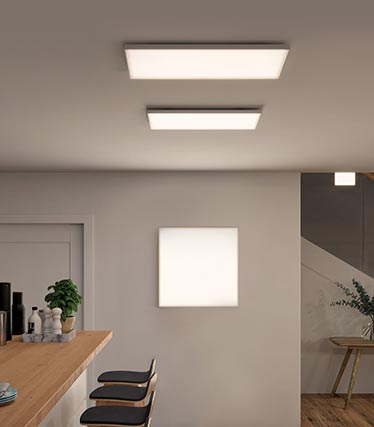









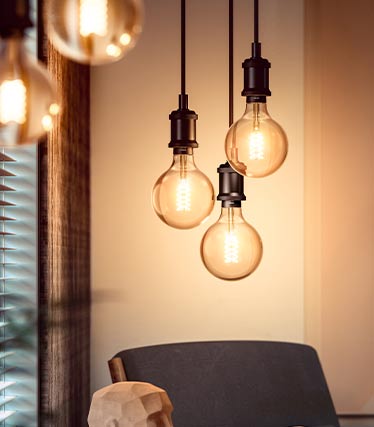

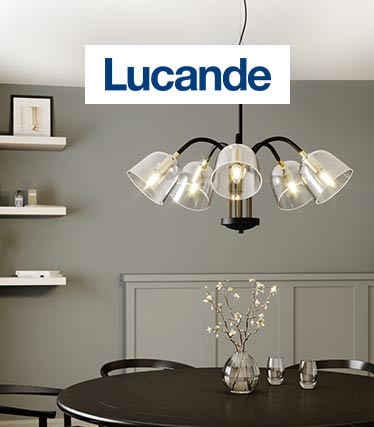


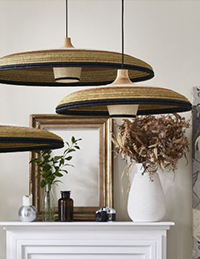
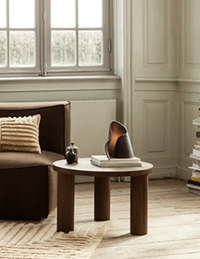
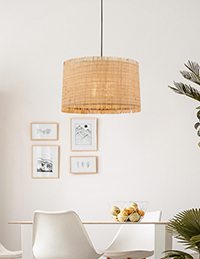
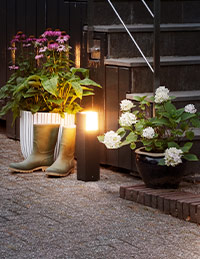
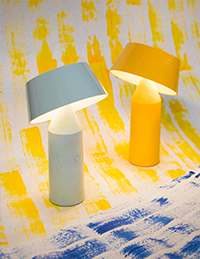



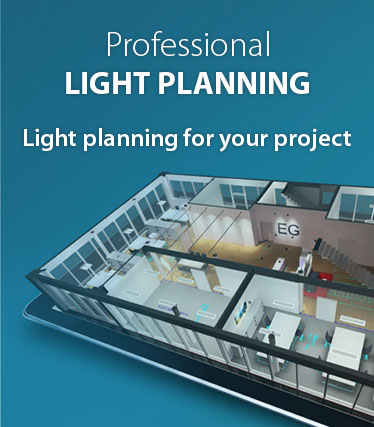




:format(jpeg))
:format(jpeg))
:format(jpeg))
:format(jpeg))
:format(jpeg))
:format(jpeg))
)
)